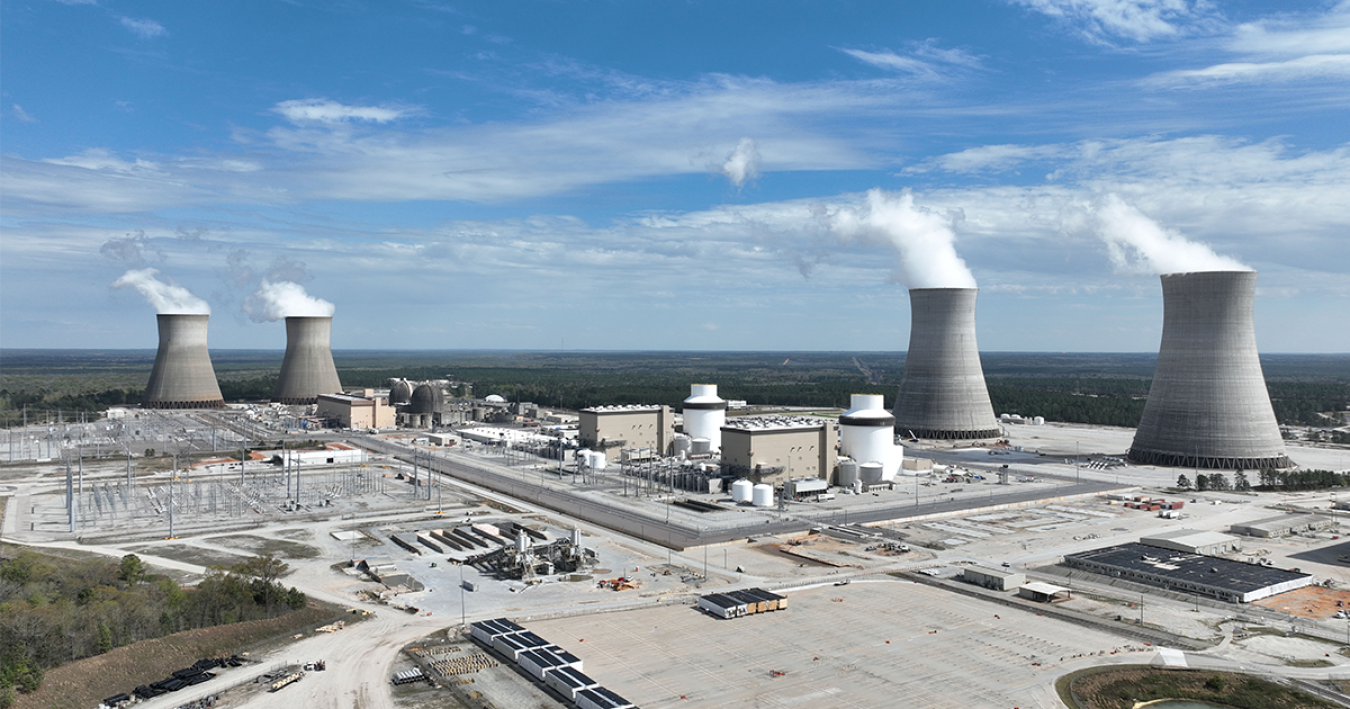
Nuclear energy provides roughly half of America’s carbon-free electricity, making it the largest domestic source of clean energy.
Nuclear power plants do not emit greenhouse gases while generating electricity. Existing U.S. plants produce power by heating or boiling water to create steam that spins a turbine. The water is heated by a process called fission, which makes heat by splitting apart enriched uranium atoms inside a nuclear reactor core in a safe and secure way.
Nuclear power plants maintain the highest standard for operational safety, security, cybersecurity, and emergency preparedness.
Nuclear Power Plant Safety
U.S. nuclear power plants are already among the safest and most secure industrial facilities in the world due to the industry’s commitment to comprehensive safety procedures, robust training programs and stringent federal regulation that keep nuclear plants and neighboring communities safe.
Nuclear power plants are designed, built, and operated using a “defense-in-depth” approach in which multiple independent and redundant layers of protection are always in place to ensure safe operation, even in the event something goes wrong.
U.S. Nuclear Regulatory Commission
The U.S. Nuclear Regulatory Commission (NRC) is an independent federal agency and a strong and effective regulator of commercial nuclear power plants. NRC issues the federal licenses to construct and operate nuclear power plants after performing safety, security, and environmental reviews.
NRC oversees construction of nuclear facilities and then oversees their operation through a series of inspections and performance reviews.
The NRC’s mission is to provide reasonable assurance of adequate protection of public health and safety and to promote the common defense and security and to protect the environment by ensuring that each plant complies with the technical and administrative requirements established by the agency, and terms imposed by a facility license.
Advanced Nuclear in the United States
The current U.S. operating fleet of 94 reactors helps to power homes and businesses in 28 U.S. states. It is comprised of large, gigawatt-scale light water reactors including the two newest units, Vogtle 3 and 4, which use the Westinghouse advanced passive pressurized water reactor AP1000 design.
Relative to the rest of the U.S. reactor fleet, the AP1000 is an “advanced reactor” which uses passive safety features as well as modular construction to improve economics.
“Passive” doesn’t mean reactor operators are resting on their laurels — quite the opposite.
Passive safety refers to the ability of advanced reactors like the AP1000 or newer designs under development to shut down and remove excess heat without human intervention. In the unlikely event that a nuclear plant loses power, passive safety systems use the laws of physics to keep a reactor safe and cool the core such that fuel is not damaged. They take advantage of things like gravity or the natural circulation of coolant to move heat away from the reactor core without the need for external power sources, pumps, or operator action, sometimes referred to as “walk-away safe.”
Enhanced Safety of Advanced Reactors
“Advanced reactors” refer to a broad suite of designs that come in an incredible variety of shapes, sizes, materials, and fuel types.
One thing they share in common is the ability to achieve enhanced efficiency, safety, and versatility over conventional reactor designs. Their simpler design, compared to conventional reactors, means they require fewer components, less maintenance, and fewer workers. In addition, they are designed to be self-adjusting and fail-safe with passive safety systems that prevent the possibility of over-heating.
Advanced Reactor Concepts
Advanced Reactor Fuels
Many advanced reactors plan to use advanced fuel designs that have the potential to further improve the safety and operation of nuclear plants.
These fuels could endure worst-case conditions longer thanks to materials that are more resistant to radiation, corrosion, and higher temperatures. They’re designed to provide longer response times when something goes wrong — like a total loss of power, which is what led to fuel melting in three reactors at Fukushima in 2011 following the earthquake and tsunami.
They are also expected to perform even better than current nuclear fuels and could extend the time between refueling, which would reduce the amount of spent fuel generated over the lifetime of a reactor.
Many of the fuels are being tested today to support deployment. Other advanced nuclear fuels may be used like poppy seed-sized microparticles that can withstand temperatures hotter than molten lava thanks to their triple-layer coatings, which act like individual containment domes to largely retain the fission gases and volatile fission products. The ultra-robust design means they can’t melt in commercial high-temperature reactors. Still other designs employ low-pressure, liquid fuel that cannot be mechanically damaged.

